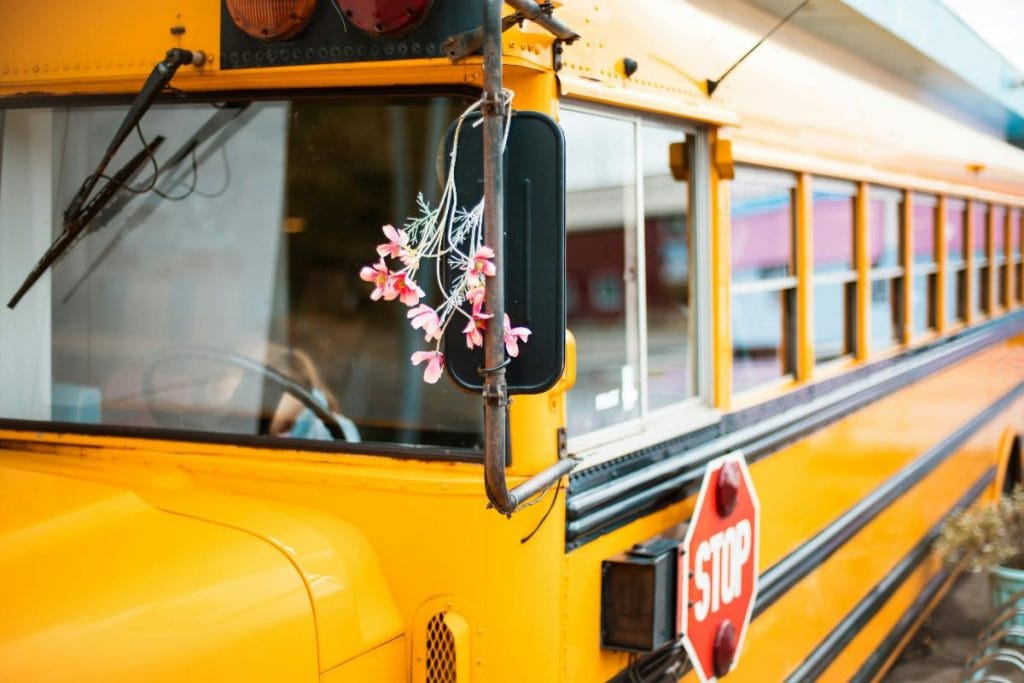Field trips—a mix of excitement, learning, and the kind of chaos that leaves us wondering why we signed up in the first place. Whether it’s a museum, a historical site, or even a zoo (with kids asking if they can feed or touch all of the animals), it’s a memorable adventure for everyone. If you’re a mom or a parent chaperone, the job of keeping kids safe and happy falls squarely on your capable shoulders. To help you do just that—with hopefully fewer gray hairs—here are eight tips to keep everyone safe on the next big field trip adventure.

1. Safety Starts on the Bus
Before the kids even get to the field trip site, you’ve got to make sure the journey itself is as safe as possible. This means making sure everyone’s buckled up, seated safely, and preferably not pretending the bus is a roller coaster. Assigned seating can be a lifesaver, too—it keeps kids in place and makes your life easier when it’s time to do that all-important headcount.
And speaking of headcounts, do them before the bus starts moving, while the bus is moving, and right after it stops. You never know who’s decided to play an elaborate game of hide-and-seek in the back row. A little order goes a long way toward making the ride a safe one.
2. The Buddy System is Your Best Friend
The classic buddy system might feel a bit old-fashioned, but it works. Pairing the kids up keeps them accountable and reduces the risk of a kiddo wandering off to find a “cooler group” of meerkats at the zoo.
Pro tip: Pair the kids wisely. Two troublemakers together could make you feel like you’re herding a pair of hyperactive squirrels rather than two children. Pair a focused kid with one that needs a little more supervision, and you’ve got a recipe for (relative) peace and safety.
3. Set Clear Rules (And Repeat Them. Twice.)
Kids are not always great at hearing—especially when they’re excited, and there’s a giraffe within sight. This is why it’s super important to lay down some clear rules right from the start. Think along the lines of “stay with the group,” “don’t touch things unless you’re allowed to,” and “don’t make a break for the penguin enclosure, no matter how cute they look.” Kids need structure, and clear expectations will help avoid chaos.
When you’re setting the rules, try to make them memorable and fun—a little humor never hurts. Also, it helps to repeat them more than once (about 27 times should do it, but twice will have to suffice). Keeping it light can make the rules stick without sounding too strict.
4. Hydration is Key—And Bathroom Breaks Matter
Nothing brings down the fun of a field trip faster than a dehydrated kiddo or an urgent “I need to go NOW” moment. Pack extra water and plan out bathroom breaks. This is especially true for outdoor trips, like a zoo, where hydration matters and bathrooms aren’t always around the next corner.
On that note, keep an eye out for slippery restroom floors. They can turn into unexpected slip-and-slide arenas for kids who think running is the quickest way back to the monkey exhibit. A slip and fall accident at the zoo is the kind of memory you don’t want to bring home, so it’s best to supervise those bathroom trips and keep everyone on their feet.

5. Emergency Contact Info & First Aid Kits
When you’re on a field trip, being prepared is everything. Carry a list of emergency contacts, and make sure each kid has your number written down, either in a pocket or a small backpack. This might seem overly cautious, but you’ll be glad you did it if someone somehow slips out of the group.
Also, make sure you’ve got a small first aid kit with you—band-aids, antiseptic wipes, the works. You’d be surprised at how many knees get skinned even on a relatively easy-going day out. A quick band-aid can save you from the tears and drama of having to sit on the sidelines because of a scraped knee. Plus, it makes you look like the superhero that you are—one bandage at a time.
6. Headcount, Headcount, Headcount
Seriously, you cannot do too many headcounts on a field trip. This is the secret weapon in your “keeping everyone safe” toolbox. Count heads before getting on the bus, after getting off, before entering any new exhibit, and after every bathroom break. Field trips have this unique ability to turn kids into Houdinis, slipping away just as you’re about to say, “All present!”
Make a habit of it, and consider enlisting the help of a fellow chaperone. It’s much easier to count the kids when they’re not also counting themselves while trying to “help.”
7. Dress for the Occasion
Dressing appropriately might seem like a small detail, but it can make or break the day. Comfortable shoes are a must—we’re talking sneakers, not glittery flats or flip-flops. When you’re walking through a zoo, the last thing you want is blisters halfway through the safari exhibit.
Check the weather beforehand and make sure the kids have extra layers if needed. Weather can change faster than a toddler’s mood, and an unplanned cold breeze can bring down the group’s morale quickly.
And speaking of dressing for the occasion, having the kids in matching shirts can help make wrangling them easier.
8. Stay Positive and Keep Calm
No matter how much you prepare, things sometimes go sideways. Someone will lose a hat, someone else will have a meltdown, and someone will definitely ask if they can adopt a lion. The key is to stay positive. If the kids see you panicking, they’re more likely to feel unsafe and lose confidence.
Take a deep breath, roll with the punches, and remember—they’re just kids. They’re exploring, learning, and, yes, occasionally trying your patience. Keeping a calm attitude when things don’t go as planned is the glue that keeps the group from completely unraveling. Plus, you’ll set a good example for the little ones on how to manage challenges.

Field trips are a mixed bag—a little exhausting, a little chaotic, but ultimately full of wonderful memories. By focusing on safety and staying prepared, you’re making sure the kids can truly enjoy the experience.
With these tips, you’re ready to face the next field trip head-on. Whether it’s a zoo, a museum, or a park, you’ve got this! Just pack those band-aids, repeat the rules (twice), and keep counting those heads. You’re doing a great job—just don’t let the kids feed you to the lions!
